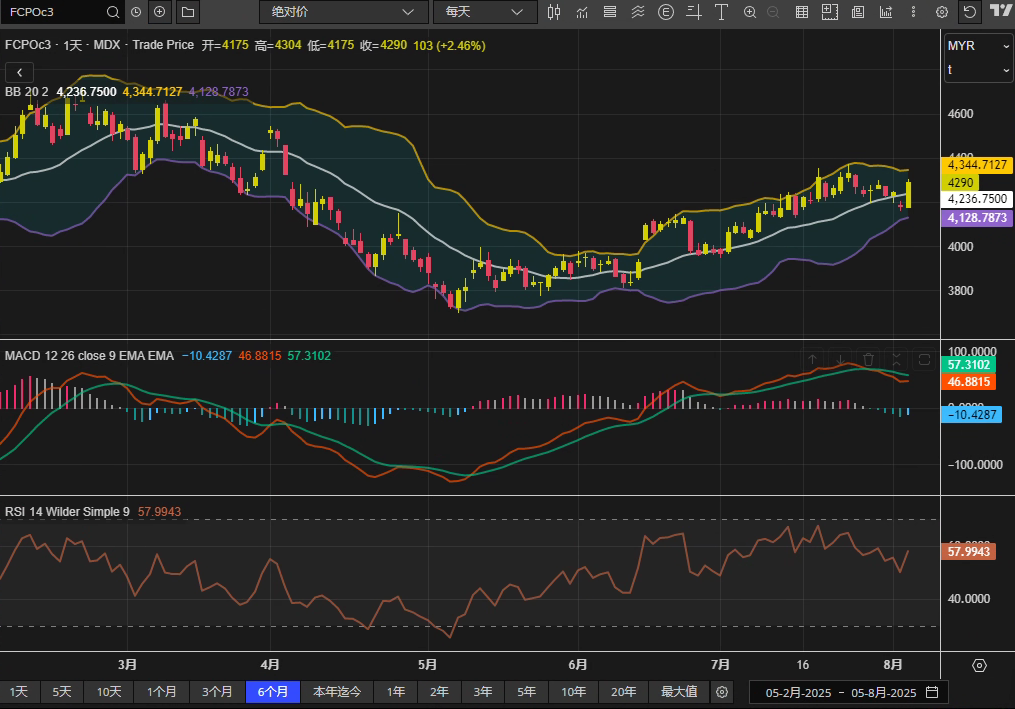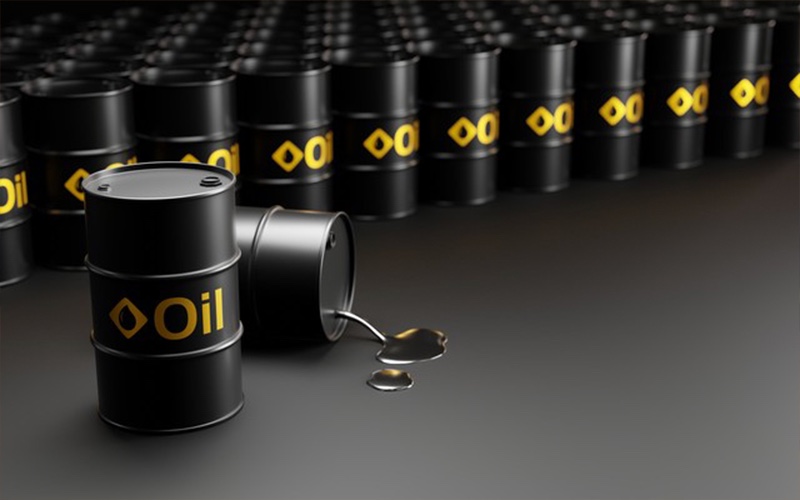Palm oil strikes back! Short-covering and export expectations trigger a 2.46% surge, but are bulls truly safe?
2025-08-05 18:47:13

Price repair under the resonance of multiple factors
Kuala Lumpur traders noted that yesterday's rebound of 2.84% from its low for the Dalian palm oil contract (DCPcv1) fueled buying sentiment in the Malaysian market. Notably, Chicago soybean oil (BOcv1) rose only 0.17%, while Dalian soybean oil (DBYcv1) gained 1.19%, indicating the market is currently focusing on palm oil's relative price advantage. A survey by a reputable institution indicates that Malaysian palm oil inventories may climb to a nearly two-year high for the fifth consecutive month in July, but this negative trend has been partially offset by the previous decline.
Structural shifts are occurring on India's demand side: palm oil imports declined month-over-month in July due to contract cancellations, but soybean oil arrivals hit a three-year high, primarily due to delayed shipments from South America. This phenomenon may prompt Indian buyers to reassess price differentials when replenishing inventories in August. Currently, palm oil's discount to soybean oil remains above its historical average, providing potential support for future exports.
Biodiesel and the marginal impact of exchange rates
Crude oil market volatility indirectly weighed on palm oil. While OPEC+ production increases and demand concerns weighed on international oil prices, US comments on India's purchase of Russian crude oil rattled the market, narrowing WTI crude oil's intraday range. Regarding biodiesel blending economics, continued weakness in crude oil could weaken the impact of Indonesia's B35 policy on palm oil consumption.
The ringgit appreciated 0.24% against the US dollar today, theoretically raising import costs, but the actual impact is limited. A Singaporean brokerage believes: "Current price drivers are still dependent on expectations of an inventory inflection point. If exports increase by more than 10% month-on-month in the first 15 days of August, the market may trade in advance to reduce inventory."
Institutional Viewpoint Focus
LMC International analysts emphasized in today's report: "Although inventory pressure has not yet been fully released, the deep discount of futures to spot prices has reflected pessimistic expectations. If the production peak ends earlier than in previous years, the supply and demand structure in Q4 may shift rapidly." It pointed out that some growing areas in Southeast Asia had less rainfall in July, and attention should be paid to the revision of yield data in the MPOB monthly report.
Rabobank, on the other hand, is cautious: "With combined oil and fat inventories in Indian and Chinese ports exceeding 2 million tonnes, demand for restocking may be suppressed in the short term. However, the pre-Ramadan stocking cycle remains a potential bullish variable." The agency raised its average price forecast for 2025 from 3,950 ringgit to 4,100 ringgit, but warned that "the upside depends on whether macro risk aversion eases."
Market Outlook
Tomorrow's market will focus on August 1-10 export data from shipping survey agencies ITS and AmSpec. Technically, if the FCPOC3 contract successfully breaks through the 20-day moving average resistance of 4,320 ringgit, it could test the 4,400 mark. However, if export growth falls below 5%, a pullback to the 4,150-4,200 support range is possible. It is recommended to monitor the Dalian overnight market and the USDA's weekly oilseed crushing report for its impact on global oil and fats sentiment.

- Risk Warning and Disclaimer
- The market involves risk, and trading may not be suitable for all investors. This article is for reference only and does not constitute personal investment advice, nor does it take into account certain users’ specific investment objectives, financial situation, or other needs. Any investment decisions made based on this information are at your own risk.





















